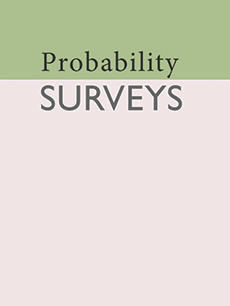Abstract
The survey is dedicated to a celebrated series of quantitave results, developed by the Lithuanian school of probability, on the normal approximation for a real-valued random variable. The key ingredient is a bound on cumulants of the type , which is weaker than Cramér’s condition of finite exponential moments. We give a self-contained proof of some of the “main lemmas” in a book by Saulis and Statulevičius (1989), and an accessible introduction to the Cramér-Petrov series. In addition, we explain relations with heavy-tailed Weibull variables, moderate deviations, and mod-phi convergence. We discuss some methods for bounding cumulants such as summability of mixed cumulants and dependency graphs, and briefly review a few recent applications of the method of cumulants for the normal approximation.
Funding Statement
This work is funded by the scientific network Cumulants, concentration and superconcentration by the DFG (German Research Foundation) – project number 318196255.
Acknowledgments
We thank Zakhar Kabluchko, Christoph Thäle and all members of the DFG scientific network Cumulants, concentration and superconcentration, as well as the participants of the workshops, for helpful discussions. This work is funded by the scientific network Cumulants, concentration and superconcentration by the DFG (German Research Foundation) – project number 318196255.
Citation
Hanna Döring. Sabine Jansen. Kristina Schubert. "The method of cumulants for the normal approximation." Probab. Surveys 19 185 - 270, 2022. https://doi.org/10.1214/22-PS7
Information





